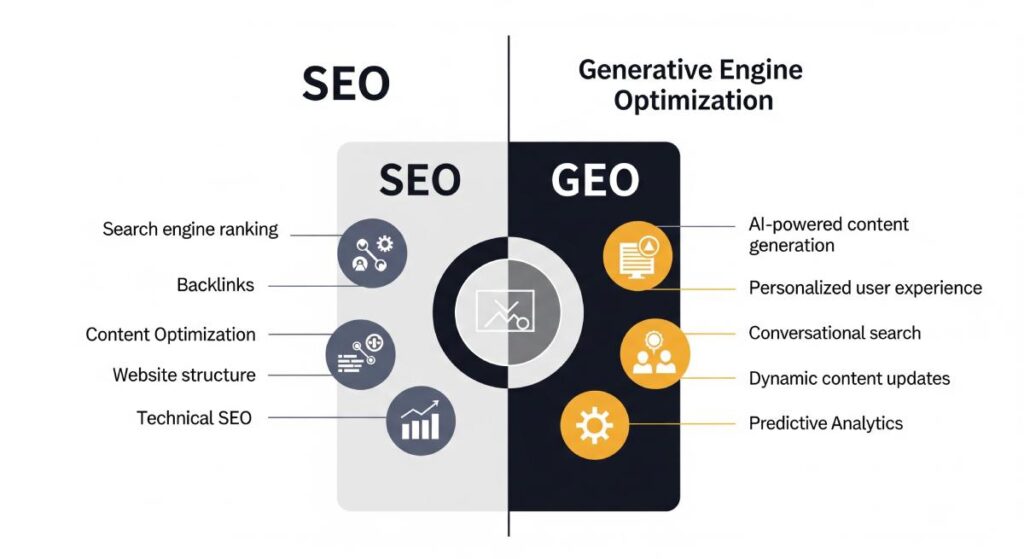Blogging is one of the most powerful steps a business can take when looking to improve its search engine optimization. A regularly updated blog with high-quality posts on topics that are relevant to its audience can make a significant difference in how the website performs in search engine rankings.
The regular nature of blogging ensures a business’s website remains fresh and current, which fosters trust among readers and Google. When websites are updated frequently, it signals to Google that there is fresh and relevant content, and their algorithms will index the site more often. While most businesses do not have a reason to update their homepage frequently, a blog is an excellent way to naturally add new content to a site on an ongoing basis.
Engaging and well-written blog posts improve the amount of time users spend on a website’s pages, which is another very important ranking factor. Blogs also present businesses with opportunities for internal linking and long-tail keyword targeting. Best of all, they allow businesses to connect with their audiences, which means their posts are likely to be shared across the internet and bring in more traffic, which also gives rankings a boost.
However, merely having a blog and posting to it without a solid plan is not likely to yield search engine optimization benefits. Instead, it is important to incorporate SEO best practices into a strategy that works for the business and its target audience.
Here are eight tips for writing a blog with improving SEO in mind.
1. Identify Your Target Audience
A big part of optimizing blog content for search engines is writing to your audience, which means that first, you need a thorough understanding of the readers your blog is targeting. Your strategy must be guided by not only who you are targeting but also what you want them to do after they read your article.
One of the most effective approaches in writing a blog for your target audience is using buyer personas. These are fictional representations of people who are your ideal customers, and this will typically be informed by research and data.

Many SEO companies begin by creating buyer personas that can be used to help companies attract leads and customers who are likely to be retained. These personas are used for everything from content creation and product development to follow-up and customer retention activities.
For example, imagine that the target customers for your cosmetic dentistry practice are mostly women who have some extra money to invest in their appearance and a desire to look more attractive. Try to picture this customer and understand their specific needs and interests. Let’s say she’s 45 years old and lives in Northern Virginia, where the practice is located. This is a good start, but you also need to dig deeper. What is her home life like? How about her educational background?
Developing your buyer persona further, she is married and has two elementary-school-aged children. She has a college degree but is a full-time homemaker, and her household income is $100,000 on account of her husband’s job. In her spare time, she likes to watch the “Real Housewives” TV series on Netflix and browse the Instagram accounts of her favorite celebrities.
She aims to be more confident, and her main challenge right now is not having enough time to do everything she wants to do, like go to the gym or volunteer for causes she is passionate about, such as animal welfare.
Figure 1.3 demonstrates demographics data in chart form.
Talk To Current Customers
It is necessary to delve deep when figuring out your buyer persona, but ideally, you will not be guessing or generalizing. Instead, you will want to interview actual clients to get a better picture of who is buying your products or services.
A good place to begin is by talking to your existing customer base. Those who have already purchased a business’s products or services and engage with the company are likely to exemplify the persona you are targeting. Many customers will be happy to be interviewed because people like having their opinions heard and appreciate having the opportunity to have an impact on the products they use. In fact, involving them in interviews could make them even more loyal to your brand.
When reaching out, make it clear that your objective is to obtain feedback from them and that the information they provide is highly valued by the team. Be clear that it is not a sales call and that you will not take too much of their time.
If customers seem unwilling to talk to you, you may want to offer incentives that will motivate them to participate in these interviews. A simple gift card is one good option that may inspire greater cooperation.
Don’t Try To Please Everyone
Some businesses may be targeting more than one type of buyer, so it will be necessary to create several buyer personas that represent each of these targeted groups. However, it is important to keep in mind the old adage that when you try to please everyone, you please no one.
This means that when a business treats its blog audience as a single unit and builds messaging and campaigns that appeal to the broadest audience possible, this often creates a rather bland impression because no one who has read the message feels as though they are being spoken to directly.
Without these buyer personas in mind, it is difficult to know what type of content to create and which benefits and qualities should be highlighted. Buyer personas can also help identify the pain points that should be addressed or the emotions that should be evoked when writing blog posts. It also helps avoid the time-consuming and expensive problem of bombarding the broader audience with a significant amount of content that does not interest them. In short, buyer personas allow you to share the right content at the right time with the right people.
2. Conduct Keyword Research
Once the target audience has been identified and buyer personas have been prepared, it is time to determine what type of content the blog’s readers wish to consume. Start by considering what topics the blog could realistically cover that relate to the business and then carry out some keyword research to refine the topics further.
Keyword research involves finding and analyzing the search terms that individuals type into search engines so that they can be used to form blog posts. Good keyword research can give you insights into current marketing trends so that your blog’s content can be created around relevant keywords and topics that audiences are searching for. This will enable the blog to rank higher in search engine results and attract more traffic.
When carrying out keyword research, the three main elements to focus on are:
- Relevance – Google ranks content in terms of its relevance. A post will only rank for a particular keyword if it actually meets the needs of those searching for it. This means it is not enough to just work the words into the content; it must be meaningful and provide answers. It should also aim to be the best resource available for the targeted query.
- Authority – When Google deems a source authoritative, it gives it more weight. Enriching your business’s website with content that is genuinely helpful and promoting it to earn backlinks and social recognition can help to build authority.
- Volume – The monthly search volume is a useful metric for indicating how many times a certain keyword is searched for each month across all audiences. Trying to rank on the first page for a keyword no one is searching for is a waste of effort because it will not bring traffic to the site.

Figure 4.1 demonstrates Ahref’s keyword data.
Researching Keywords For SEO Strategies
The first step in keyword research is to make a general list of relevant topics that you believe are important to your business. If you are already blogging regularly, these might be the subjects you post about the most often, or they could be topics that crop up frequently in sales conversations. What do you think your buyer personas are searching for when they go online that you would want your business to rank for?
Once you have a list of broader topics, you need to find more specific keywords that fall under these categories. These are the phrases you would like to rank for in search engine results pages. Keep going until you have a good list of phrases, keeping in mind that you will want some room for further refining.
Next, you need to think about user intent. Do not just merely take keywords at face value; think about what people mean when they are searching on these terms and what they are looking for. Typing the terms into a search engine and perusing the top results can provide some insight in this regard.
Another useful approach is looking at the related search terms that appear when plugging these keywords into Google. Any time an individual types a phrase into Google and scrolls to the bottom of the page, suggestions will appear for searches that are related to the original query. These can be useful for sparking ideas for additional keywords that are worth considering as part of your strategy.
Using Keyword Tools
SEO and keyword research tools can be incredibly useful in finding good keywords to target. Some of the most popular tools are SEMrush, Ahrefs, and KWFinder.

Google Keyword Planner is a good tool for trimming down your keyword list as it can provide you with the traffic estimates and search volumes of the keywords you are considering targeting. Those that have a very small number of searches should be avoided as they are unlikely to generate enough traffic to be worth the effort. The same is true for those with extremely high search volumes as it will typically be too difficult to outrank the competition for such terms.
It is a good idea to prioritize those keywords that your business has a chance of ranking for based on the authority of your website. In each post, you will want to include some shorter, more generic keywords as well as long-tail keywords with three or more terms for a balanced strategy that includes shorter-term wins and longer-term goals.
Broken pages are one of the most frustrating problems users can encounter on a website. In addition to driving users away from the site and toward competitors, these problems make visitors less likely to return to a website or recommend it to a friend.
Figure 5.2 demonstrates the Google Keyword Planner platform.
3. Use A Catchy Title
When you are trying to attract the high volumes of traffic that will give your website authority, you need a way to make your content stand out from the crowd. A catchy title can go a long way in this regard as it is the first element of your blog post a reader will see when they come across it. The wording of the title will have a strong influence on whether or not a potential reader will click through to read more or keep scrolling past it.
There are several ways you can make a title catchier. Using data, leading with curiosity and asking a question are all good approaches. Steer clear of clickbait; you must ensure that the title you use honestly represents the content in the blog post or you will lose the trust of your audience.
Tell Readers What To Expect
Many individuals experience information overload when searching for information online. Most people do not have the time to go through every article that appears on the results page, so they make a quick assessment of which result is worth exploring further by scanning the headlines. Readers want to know exactly what they will get before they click on a site, so be sure to use a title that clearly conveys what the post will be about. If readers feel they have wasted their time after reading the post, they will not return.
If the post provides useful information aimed at solving a problem, be sure the title reflects that. People often search with terms such as “how to”, “what”, and “why”, so using these terms in a title, where relevant, is a good strategy for positioning the post as a valuable resource for potential readers.
Include The Keyword
The title is a key factor in the post’s SEO, so make sure that you optimize it. Both the keyword and the meta description will be visible in the search engine results pages, so make the most of this opportunity to include the keyword for which you are trying to rank the post.
Appeal To The Target Audience
Ensure the title appeals to the target audience. It must contain elements that are placed there specifically for your readers. Would your buyer persona click on this title? Be sure to adopt their tone when writing it. For example, if you are targeting younger readers, casual language and even slang terminology can be effective.
Use A Reasonable Length
Titles should not be so short that they lack the information needed to attract readers’ attention, but making them too long can cause people to lose interest. In addition, long titles often go over the character limits used by SERPs, which means the entire title may not even display when people are browsing search results. 60 characters is a good general guideline that provides enough space to entice readers while remaining readable.
Consider Statistics And Numbers
Using numbers in the title is a great way of providing clarity and can bring in more traffic. If the blog post is written in a list format, such as “10 reasons why…” or “5 ways to…”, it lets readers know how long the post is going to be.
It may also spark someone’s curiosity; if the post is a list of 15 ways to do something that a reader thought could only be done in one way, they are more likely to click on the post to find out about the other methods.
4. Write Evergreen Content
Be sure that the blog posts you write for your business contain evergreen content. This means that the topics you are writing about will remain valuable and relevant to readers in the long run. It is okay if the content might require minor updates over time – such as how-to guides about software programs that may need updated if the software is updated, but be sure that the topic is one that readers will be interested in well into the future. If it is something that will lose relevance and importance with time, try to find a different angle.
This is important because it allows your post – and by extension, your site – to rank over time rather than ranking highly in the near future before disappearing. This helps ensure a steady amount of traffic will come to the blog so you can get the best return on your investment in the post. The traffic that an evergreen post continually attracts can help a business to generate leads over time.
5. Use Proper Structure
When writing blog posts with the aim of improving SEO, it is important to avoid large blocks of text. It is best to keep paragraphs relatively short. This is particularly important now as many readers browse websites on mobile devices; shorter paragraphs make it easier for them to read the content on smaller screens. Aim for paragraphs of around two to three sentences, and use bold and italic text where appropriate to make the content more exciting.
You should also use headings within the blog post to give the page structure. Headings are not only important from a readability standpoint; they can also help Google get a better idea of the blog post’s main topics and support your ranking. Be sure to include keywords in some of the subheadings, but only do this where it sounds natural. Do not include them if they do not flow well as it will be jarring to readers.
6. Write For Humans Rather Than Search Engines
There was once a time when it didn’t matter much what a blog post said; as long as it had the right keyword density, it could rank well in Google. This led to an influx of low-quality articles stuffed with keywords that were clearly written with ranking in mind. As a result, people started to lose confidence in Google as it was pointing them to posts that did not provide value.
Now, however, their algorithms have evolved. They are far more sophisticated and reward pages that are genuinely useful. This means writing directly to your audience and then seeing where keywords can fit in naturally after writing rather than beginning with the keywords. Be sure your posts sound natural, and try not to get caught up in the technical aspects while writing.
These days, many SEO and content companies have a team of writers who compose their posts, and a different team with SEO expertise goes in and optimizes them after they are written. This ensures the end result is readable, engaging and useful while still helping them meet their optimization objectives.
7. Link To Related Blog Posts
While back links from other websites play an important role in how high a blog ranks in the search engines, linking to and from a business’s own blog posts also has a positive influence on its ranking.
Linking internally to different pages on the website that relate to the post is an important part of a well-rounded SEO strategy. If you have written about one of the topics mentioned in the blog post in the past, be sure to link to that page. In addition to surfacing other relevant pages on your site to search engines, it helps visitors stay on your website as they click through and read posts on related topics that interest them.
For example, if your insurance company is writing a blog post about saving money on car insurance and one of the tips you include is to consider raising the deductible, you could link that part to your previous post about how insurance deductibles work. This will make both of these posts more visible to readers who are searching on those keywords.
8. Get The Meta Description Right
If you are not using meta descriptions in your post, you are missing out on a valuable opportunity to give your post more exposure. While titles and subheads that contain the keyword are a big factor, meta descriptions are another chance to show Google and potential readers what the post is about.
Google crawls meta descriptions to determine a post’s search rankings. These are the short descriptions that appear underneath the title of each result, and they should be used to summarize the post. It is important to keep it short and make sure it is compelling so it appeals to readers as they scan the results. Your post will be presented alongside other similar posts, so writing a compelling description that stands out over the others will drive more traffic to your site.
Be sure to include the main keyword you are targeting in your meta description for optimal results.
Reach Out To 321 Web Marketing
Blog posts play a central role in a business’s SEO efforts. The right blog post strategy has the potential to position your site at the top of the search engine results for relevant keywords to drive business and establish your authority in the field, but there are many factors to consider. To learn more about advancing your search engine optimization efforts or to schedule a consultation with an experienced SEO marketing company, get in touch with 321 Web Marketing.







